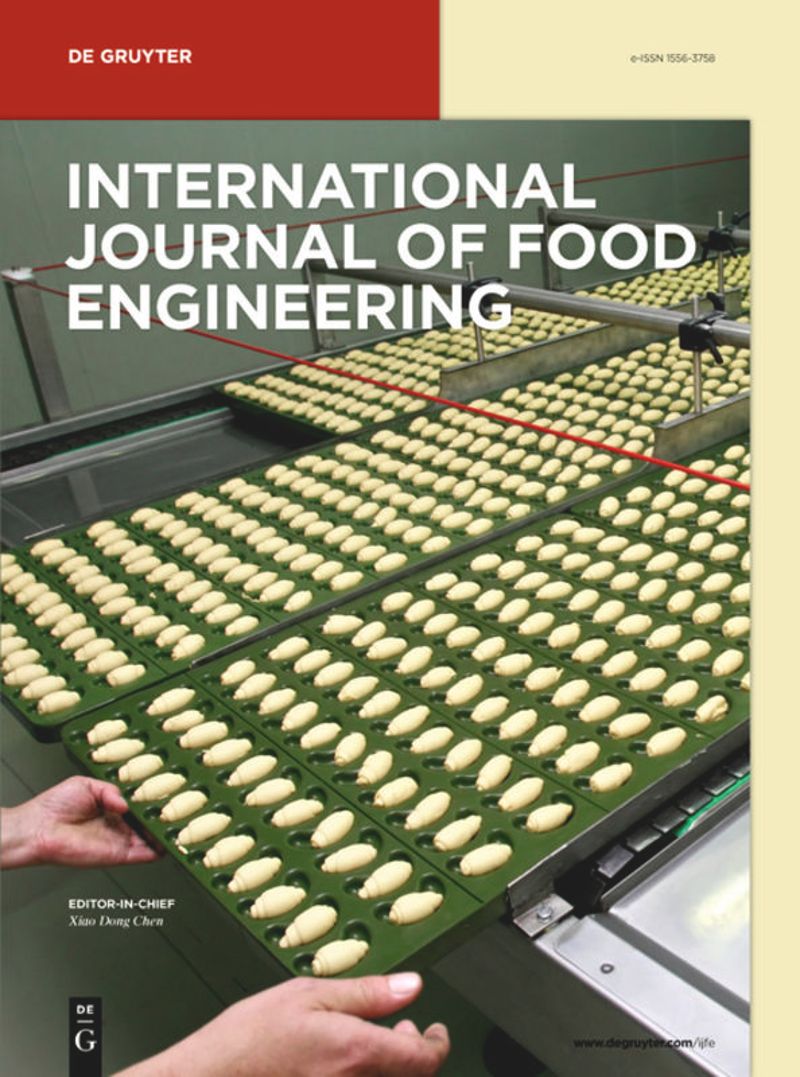商品低甲氧基果胶粘度和临界浓度的测定
IF 1.4
4区 农林科学
引用次数: 0
摘要
摘要测定果胶溶液的粘度和临界浓度是果胶工业应用的关键。临界浓度可以根据零剪切粘度、表观粘度、比粘度和稀聚合物溶液的稠度指数从流变学角度确定。目前还缺乏对上述临界浓度测定方法的直接实验比较。因此,本研究旨在通过实验比较不同的粘度方法来确定三种不同果胶溶液(向日葵、柑橘和苹果)的临界浓度。在浓度为0.1 ~ 3.0% (w/v)的情况下,三种果胶源均表现出牛顿-剪切稀释行为。果胶临界浓度从低到高依次为向日葵(0.6792 ~ 0.9589 % (w/v))、柑橘(0.7172 ~ 1.0347% (w/v))、苹果(0.7645 ~ 1.1233 % (w/v))。根据稠度指数确定的临界浓度与零剪切粘度计算结果较为接近。而由比粘度和表观粘度确定的果胶溶液的临界浓度与由零剪切粘度确定的临界浓度有显著差异。本文章由计算机程序翻译,如有差异,请以英文原文为准。
Determination of viscosity and critical concentrations of commercial low methoxyl pectin
Abstract Determining viscosity and critical concentrations is essential for industrial application of pectin solution. Critical concentration can be determined rheologically based on zero shear viscosity , apparent viscosity, specific viscosity, and consistency index of dilute polymer solution. Direct experimental comparison of the aforementioned methods for critical concentration determination is still lacking. Therefore, this study aims to experimentally compare different viscosity methods to determine critical concentration of three different pectin solutions (sun flower, citrus, and apple). The three pectin sources at concentrations of 0.1–3.0 % (w/v) showed Newtonian to shear thinning behavior. The critical concentration ranges of pectin, from the lowest to highest, was sunflower (0.6792−0.9589 % (w/v)), citrus (0.7172−1.0347 % (w/v)), and apple (0.7645−1.1233 % (w/v)). Critical concentration determined based on consistency index was relatively close to the result obtained from zero shear viscosity. Whereas critical concentrations of the pectin solutions determined from specific viscosity and apparent viscosity were significantly different from critical concentration determined from zero shear viscosity.
求助全文
通过发布文献求助,成功后即可免费获取论文全文。
去求助
来源期刊
CiteScore
3.20
自引率
0.00%
发文量
52
审稿时长
3.8 months
期刊介绍:
International Journal of Food Engineering is devoted to engineering disciplines related to processing foods. The areas of interest include heat, mass transfer and fluid flow in food processing; food microstructure development and characterization; application of artificial intelligence in food engineering research and in industry; food biotechnology; and mathematical modeling and software development for food processing purposes. Authors and editors come from top engineering programs around the world: the U.S., Canada, the U.K., and Western Europe, but also South America, Asia, Africa, and the Middle East.

 求助内容:
求助内容: 应助结果提醒方式:
应助结果提醒方式:


